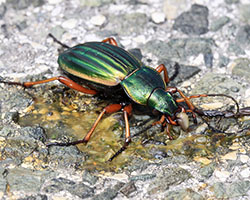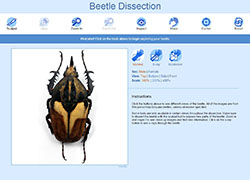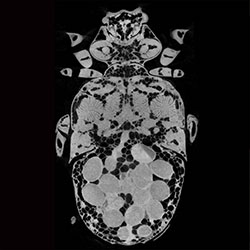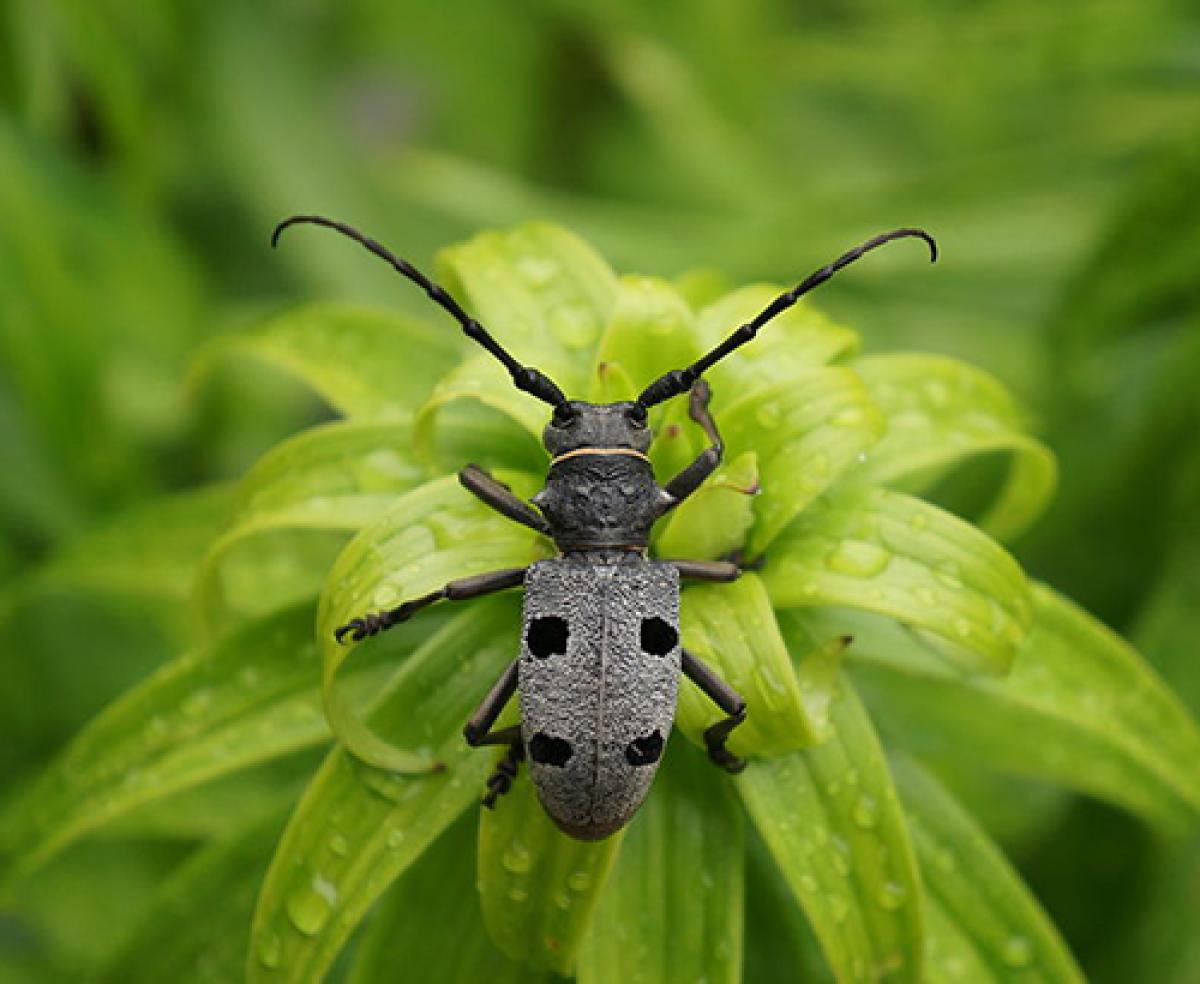
Beetles are abundant (some 350,000 named species!) and diverse. They can be pollinators, predators, scavengers, decomposers, or even parasites. They vary in size from so tiny you need a microscope to see them, to the size of an adult’s open hand.
Nanosella species are only a few micrometers long! The current largest insect is the Goliath beetle which can grow to near 5 inches long and weigh 100 grams. That’s larger than most birds.
But What's Inside a Beetle?
In this activity, you will examine the parts of a scarab beetle (Mecynorrhina torquata) by cutting one open. You’ll also get to navigate through a beetle using MicroCT (that’s x-ray computer tomography), a tool that some scientists use to investigate why and how beetle body parts function the way they do.
Getting Started

Open and play the virtual Beetle Dissection to get started exploring the beetle. You will be able to use several tools to open, remove, and zoom in on many body parts. Follow along with our Dissection Activity.
Make sure to hover your cursor over all parts of the beetle so you don't miss anything. You can also "glue" the beetle back together to take a step back and explore a new area.
Another Look with X-rays

Make sure to explore the x-ray view as well to get another look at what's inside of the beetle. Follow along on the dissection worksheet to make sure you haven't missed any areas you can explore. As you poke around, think about why certain body parts may be structured the way they are or located where they are.
Once you've completed the dissection, you should try out the x-ray beetle navigator page to get a feel for how scientists analyze insect anatomy with MicroCT technology.
Look Around
As you explore all the tools and activities the Beetle Dissection has to offer, don't forget that all of this relates to real live insects. Perhaps if you go outside near your home town, you may find scarab beetles similar to the ones you see here. After completing these activities, just think how much more you will understand about how these beetles fly, breathe, and live.
Additional images via Wikimedia Commons. Longhorn beetle image by Zigah111.
Read more about: Beetle Dissection
Bibliographic details:
- Article: Dissection Activities
- Author(s): Dr. Biology
- Publisher: Arizona State University School of Life Sciences Ask A Biologist
- Site name: ASU - Ask A Biologist
- Date published:
- Date accessed:
- Link: https://askabiologist.asu.edu/beetle-dissection-activities
APA Style
Dr. Biology. (). Dissection Activities. ASU - Ask A Biologist. Retrieved from https://askabiologist.asu.edu/beetle-dissection-activities
Chicago Manual of Style
Dr. Biology. "Dissection Activities". ASU - Ask A Biologist. . https://askabiologist.asu.edu/beetle-dissection-activities
Dr. Biology. "Dissection Activities". ASU - Ask A Biologist. . ASU - Ask A Biologist, Web. https://askabiologist.asu.edu/beetle-dissection-activities
MLA 2017 Style

Be Part of
Ask A Biologist
By volunteering, or simply sending us feedback on the site. Scientists, teachers, writers, illustrators, and translators are all important to the program. If you are interested in helping with the website we have a Volunteers page to get the process started.

